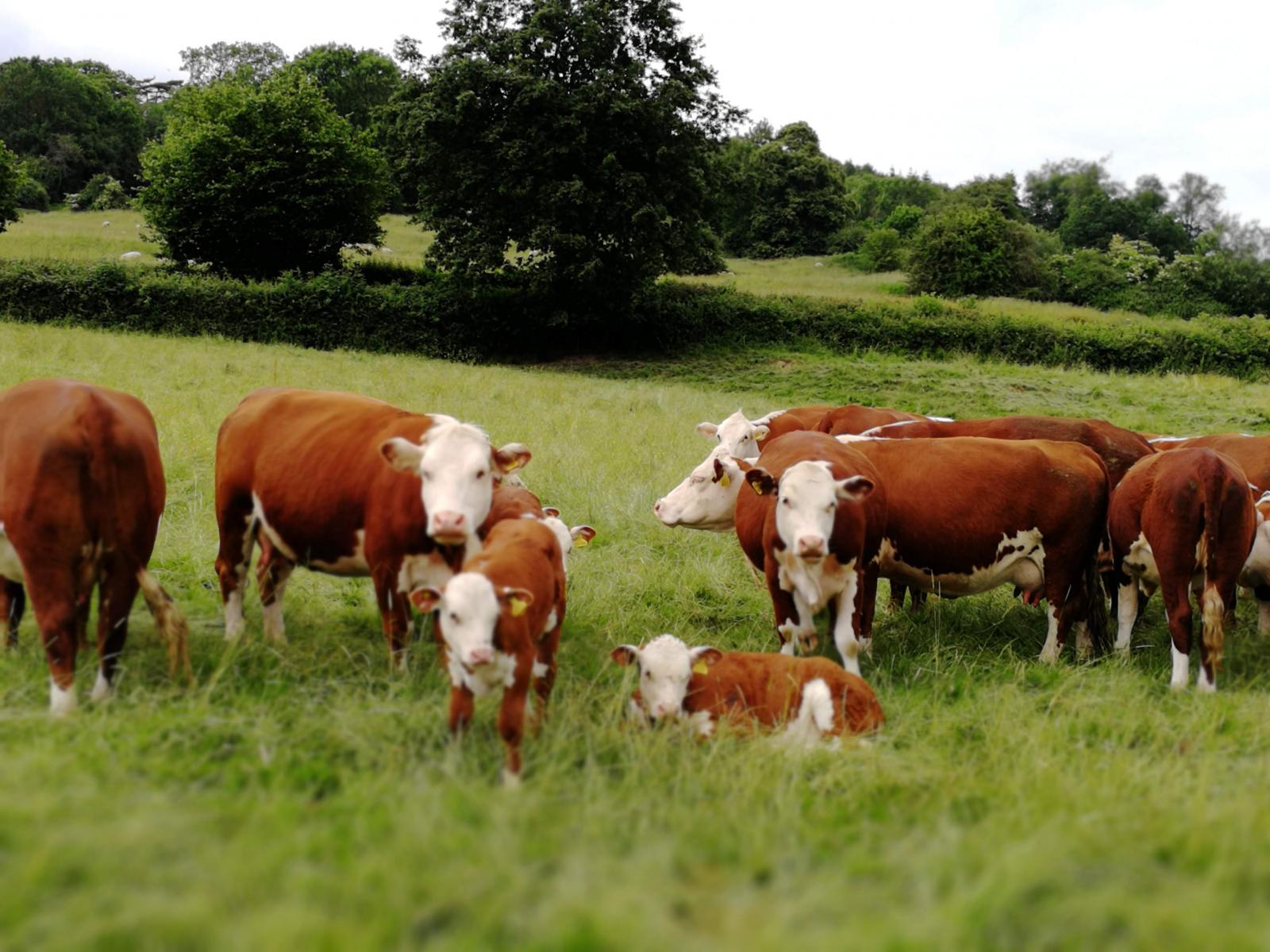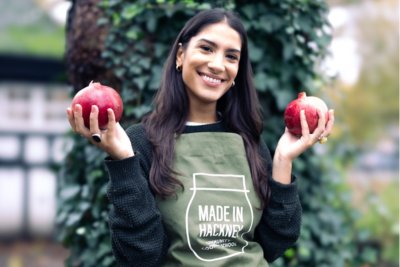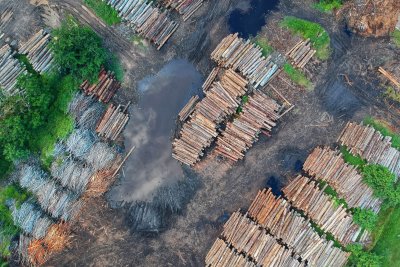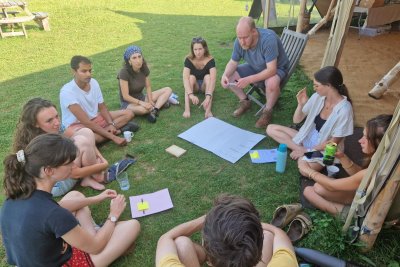 Cows by Vicki Hird
Cows by Vicki Hird
Michael Gove's ‘pipeline of support’ for farmers – how are the tests and trials going?
Alongside all the changes ahead due to Brexit, a new farm support scheme will hit major development phase in 2019. Secretary of State for Defra Michael Gove describes it as supporting the ‘Fourth Agricultural Revolution’ and promised that the government “will provide farmers and other land managers with a pipeline of income to supplement the money they make from food production, forestry and other business activities."
***Update: Since publishing this blog Defra have circulated a spreadsheet listing the proposals they are bringing forward in phase of the tests and trials. There are some good proposals covering many issues we care about but also gaps. Defra are looking to fill the gaps and are still welcoming proposals up to the 1 April 2019.***
It all sounds plausible and attractive. But how will we judge this new scheme? What are our criteria for success? How can we engage?
The Environmental Land Management Scheme (ELMS) Michael Gove speaks of will be a major shift in approach involving paying farmers for public goods rather than providing income support as the current, area-based scheme largely does. Goods may include outcomes like habitat protection and creation, natural flood management, water quality, carbon capture, air quality, biodiversity recovery, and animal health and welfare.
Mr Gove said the scheme "should be seen as an additional crop, with the Government ...entering into a contract with farmers to ensure we increase the provision of environmental services, many of which will also enhance farm productivity.” As long as the long-term finance is there, it is promised as a key mechanism for achieving the outcomes of the government’s 25 Year Environment Plan. The Sustain alliance is asking for more such as public health outcomes. So ELMS is the big one to watch as it develops.
Tests and trials
The first phase for ELMS roll out is a series of ‘tests and trials’ exploring various aspects of the scheme using stakeholders and farmers as guinea pigs. Government agencies, civil society groups and the farming industry are involved and, after over 100 proposals were made, decisions have been made already about what tests are going ahead. It is worth saying that the concept of an ELMS scheme has been welcomed by many although some of the farm community remain highly concerned and often largely in the dark about the detail as the FT recently noted.
Whilst some ‘new style’ schemes have already been up and running (like a Natural England Payment by Results scheme), the whole programme shifts up a gear in 2019 with the tests and trials. Concerns are growing about whether these tests and trials are covering all sectors in this process (such as those with little previous experience of agri-environment schemes like horticulture, pigs and poultry) and all farm sizes.
Many Sustain members are running tests or trials, having applied in 2018. Others hope to and it is vital this crucial period of testing is as comprehensive as possible - covering all sectors, all business sizes and types and so on. It is worrying to hear organisation report that little money is available and others that their proposals have not yet been accepted.
I had a chance to ask Michael Gove recently about this in person and he seemed unaware proposals were being delayed or restricted. Are they testing how the new scheme can deliver on all possible public goods including public access and public health, soil health, pesticide reduction and so on? How are the testing parameters linked to what should be a new definition of productivity to encompass natural capital and resource use? Will the ‘land use plan’ element include all elements of the farm so a whole farm approach is really tested? Will organic farming be recognised for its multiple benefits? How are payment rates going to be set and payment processes tested?
Information gap
Changes to farm support will have such a huge impact on farmers’ incomes, the farmed environment and food supply; it would therefore seem pertinent to have regular updates and good research modelling possible impacts. But public information on the trials and development of the scheme elements is rather thin on the ground, bar a rationale and timetable. I’m on one stakeholder group so I gain some insights but my answers felt inadequate when farmers and growers approached me at the Oxford Real Farming Conference (a hotbed of committed agro-ecological farmers highly well placed to deliver public goods!) to ask me how it will work, how to get involved in the trials and whether it will really ensure a future for their farms.
Fair dues to the Defra teams, though, who must feel a bit tried and tested themselves these days. With hundreds of new staff dealing with the burden of many new policies, legislation and ‘no deal’ preparation to boot, it is perhaps not surprising things are confusing externally. And I was encouraged to meet social scientists at ELMS meetings. Understanding how behaviour change will be achieved is key as will be the impact on farmers’ incomes (against rapidly changing trading conditions) and understanding how to achieve real lasting change.
Pilot phase
After this phase is over – ideally covering all sectors and outcomes as well as the technical issues such as the land use plan, guidance needed and payment system - and useful mistakes are made, Defra say they will use the learning from these to run a major pilot from 2021. Full implementation will be from 2025 and end to all other basic payments by 2028.
What will ELMS success look like?
The weight of expectations on ELMS is large. What would our criteria be for assessing whether the programme is working? A few thoughts:
• Strong outcomes at specific and system level – successful outcomes in a broad range of areas – from improved soil, habitats, wildlife or animal welfare to access to both nature and fresh safe food and diversification into sustainable agro-ecological systems – to make farms more resilient and sustainable. The 25 Year Environment plan indicators will be useful but not the only kind of outcomes we need.
• High take-up - by farmers and growers (there are around 29,000 in current Agri-environment schemes and the plan is to have to 88,000 in ELMS by 2028). None of the existing land in agri-environment schemes should be lost and farmer involvement in plan design will make success more likely. However, it is vital that quality of plans should be considered, not just quantity.
• No net loss of farm diversity – ELMS needs to be a bit of a miracle worker - it needs to ensure farms can survive delivering public goods but also to maintain farm diversity – size and type – to achieve many important outcomes. The ELMS will be the main public support farm diversity needs so the sums need to add up for the farmers and growers.
• Simple and accessible – to all farmers – no farmer should be put off by the time needed for applying or running an ELMS scheme. Assistance for smaller businesses needs to be available and promoted.
• Training, advice and facilitation – all are crucial elements and need to be available and affordable (or free, de-linked from provision by industry-sponsored advisors promoting e.g. more pesticide and fertiliser use), ensuring farmers can learn the skills of sustainable farming, including in monitoring outcomes and able to work together to deliver whole area outcomes.
• Joined up – linking farmers together where that makes sense via a facilitation process (like the farm cluster approach) so that landscape or catchment scale improvements can be achieved.
• Payments, monitoring and enforcement – using the principles laid out by the recent final report from final report from Dame Glenys Stacey’s review of farm inspection and regulation and backed up by well-resourced and competent agency (reversing recent severe cuts in staffing and funds) using accredited agencies carefully. The body will need to rebuild the lost trust in the Government’s current agencies and will only be successful if payments are efficient, on time and commensurate with efforts. It’s worth touching here on the issue of governance – at what level and why. Some while ago I wrote on the need for local governance and prioritisation and others are also suggesting new multi-level governance and prioritisation structures including Wildlife & Countryside Link (WCL) and Farming and Wildlife Advisory Groups (FWAG).
• Strong links to market – ideally building up farmer capacity for business plans that deliver the public goods (subsidised) as well as the private goods (for sale) in tandem, meaning possible branding and higher values as a result through helping farmers move away from the ‘yield is king’ mentality, diversifying production and adding public value.
• Building links to local community and place – reinforcing public support by public awareness and engagement in the schemes.
Using past experience
Whilst the ELMS trials and tests appear to be making a rather slow and tortuous progress, much is already known through hard-won experience over the 30 years since the first schemes (CAP Article 19) were introduced back in the 1990s. Heaps of agri-environment experience and research – what works and what doesn’t - should be drawn on. Farming and Wildlife Groups (FWAG) work will provide huge practical experience and there are many academic analyses linking farmer and expert and assessing environmental and socio-economic impacts.
More recently the outcomes from ‘results based’ payment schemes are showing useful benefits but also the pros and cons of such approaches and the huge need for farmer training, including in assessments. It was heartening to read that one benefit for the organisation paying was “a shift from paperwork to fieldwork”.
How much we pay by results (‘outcomes’) as opposed to pay for actions (‘prescription’) is a moot point. Whilst farmers want the flexibility to act on their own initiative, I increasingly hear they are worried about ‘results based’ as they fear they may lose payment if they don’t deliver the outcomes due to no fault of their own like weather conditions, or wildlife failing to flourish.
I would be interested in others thoughts on the criteria. Do email me on: vicki@sustainweb.org.
I must conclude this blog with the usual big caveat for these uncertain times and paraphrase Defra at a recent event 'These comments represent current thinking by me. Nothing is confirmed.'
Follow Vicki Hird on twitter @vickihird
Sustainable Farming Campaign: Sustain encourages integration of sustainable food and farming into local, regional and national government policies.
Sustain
The Green House
244-254 Cambridge Heath Road
London E2 9DA
020 3559 6777
sustain@sustainweb.org
Sustain advocates food and agriculture policies and practices that enhance the health and welfare of people and animals, improve the working and living environment, promote equity and enrich society and culture.
© Sustain 2024
Registered charity (no. 1018643)
Data privacy & cookies







